
Ukraine War – Here’s Why India Will Not Abandon Russia, And There’s Nothing The U.S. Can Do To Change It
As the United States and its allies continue to pressure India to abandon, or at least maintain its distance from Russia till the Ukraine invasion is over, the Indian government has ignored the Western powers. Instead of condemning Moscow, New Delhi has instead bought more Russian oil largely due to huge discount offered by the Kremlin. The Modi government can easily justify its action.
India said what it buys from Russia in a month is less than what Europe buys from Russia in an afternoon. So, Washington is barking up the wrong tree and it should first lecture the European Union before telling India what to do or what not to do. As the world’s third largest consumer of oil, India is indeed helping the Russian economy at a time when the U.S. wanted to cripple it.
However, while India imports 80% of its much needed oil, the country bought just 12 million barrels from Russia in 2021, representing only 2% of its total imports. Imports from the Middle Eastern countries account for 52.7% of India’s import basket, whereas Africa and the U.S. account for 15% and 14% of oil imports respectively. Everything changes after the Ukraine invasion.
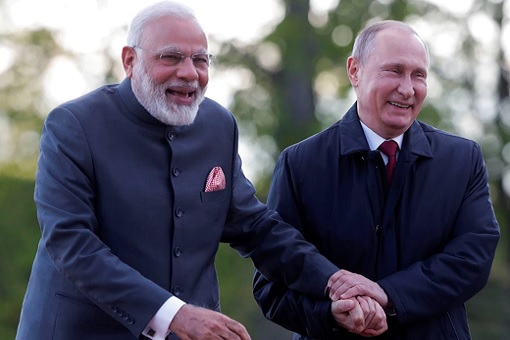
It did not import any oil from Russia in both January and February. But after the Ukraine invasion, India bought a staggering 14 million barrels from Moscow based on March and April 2022 contracts alone. The decision was no-brainer. Assuming the average oil price was US$100 a barrel, a 30% discount means India has saved a cool US$420 million.
In the pre-pandemic 2019-20, India had spent US$101.4 billion on the import of 227 million tonnes of crude oil. It then spent US$62.2 billion on the import of 196.5 million tonnes of crude oil in the 2020-21. India is expected to almost double its import bill to US$110-115 billion by the end of the fiscal year 2021-2022. Clearly crude oil is a massive expense to the nation.
Theoretically, if India could buy half of its crude oil from Russia, it could save a jaw-dropping US$16 billion. That’s a lot of money for a country that is poor compared to America, Europe or even China. The populations of China and India are almost the same – 1.4 billion people. But China’s GDP (2020) was US$14.72 trillion, more than 5 times of India’s GDP (US$2.62 trillion).

Unless the U.S. can sponsor or subsidize US$420 million or more, there’s no reason why India should obediently sanction Russia. Not only Moscow offers huge discount, Russia also incurs the costs and pays the freight, including insurance charges. Finance Minister Nirmala Sitharaman said – “I would put my energy security first. If the fuel is available at a discount, why shouldn’t I buy it?”
It’s quite embarrassing that the U.S. could not convince India, the largest democracy in the world, to join its orbit. But cheap energy is just one of the factors why India has abstained on every United Nations resolution to either condemn or punish Russia. There are military and diplomatic considerations which the U.S. cannot fix. No amount of threats from the U.S. can make India abandon Russia.
Thanks to the British Empire, after British India was partitioned into India and Pakistan in 1947, ending 300 years of colonial rule, the region saw both nations fought at least three major wars over Kashmir. Unlike China, India does not have veto power. Hence, whenever there is a United Nations Security Council resolution against India on Kashmir, Moscow will use its veto to help New Delhi.
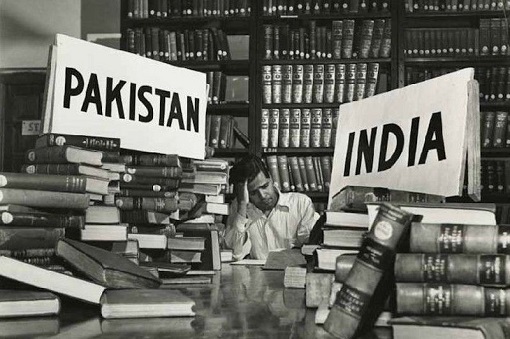
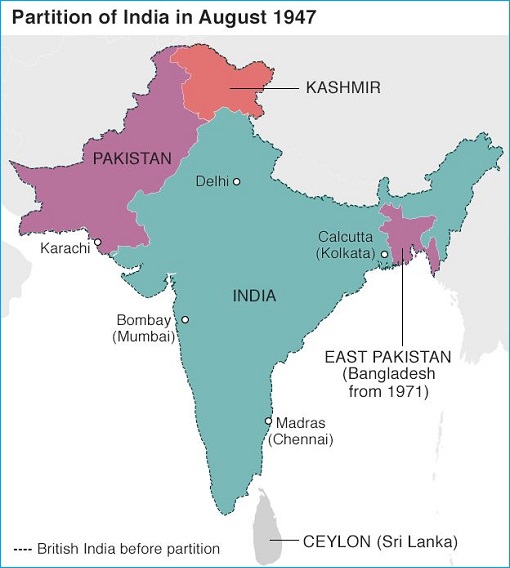
Over the years, the Soviet and Russia’s veto power has rescued India on at least six occasions – Feb 1957 Kashmir crisis, Dec 1961 Goa crisis, June 1962 Kashmir issue, and three issues in Dec 1971 involving India-Pakistan border crisis, India-Pakistan refugee issue and withdrawal of troops resolution. In all the six resolutions brought against India in the Security Council, the U.S. supported all of them.
In truth, it was the U.S. who was instrumental in forcing India to enter the Soviet orbit when America announced on Feb 25, 1954 its intention to embark on a major program of military aid to Pakistan, India’s bitter enemy. In the same year, Pakistan joined the U.S. alliance called SEATO (Southeast Asia Treaty Organization) as part of Washington’s strategy to contain the Soviet Union.
In fact, just two months after Pakistan was established in 1947, the U.S. became one of the first nations to establish relations with Pakistan. Since 1948–2016, the U.S. has provided nearly US$78.3 billion to Pakistan in military aid. It was only after the collapse of the Soviet Union in 1991 that Washington and New Delhi began to cooperate in areas such as trade, foreign policy and military exercises.

Still, like U.S.-Pakistan’s roller-coaster relationship, the bilateral ties between the U.S. and India often run into choppy waters. For example, India’s nuclear test in 1998 saw America slapped sanctions on India – until President Bush lifted it in 2001. In the same breath, the distrust between Pakistan and the U.S. still exist today due to Islamabad’s harbouring of terrorists, most notably Osama bin Laden.
India also has a long-standing border dispute with China in the Himalayan region. Both nations, sharing 3,440 kilometres border, saw border disputes that have been ongoing for 80 years. From 1962 Sino-Indian War to as recent as 2020 violent clash, where both sides fought with sticks and clubs (a 1996 agreement prohibited the use of guns and explosives near the border), both nations have failed to settle the matter.
Fortunately, India and China – both nuclear-weapon states – have fought only one serious war in 1962 when India suffered a humiliating defeat. Chinese troops captured Rezang La in Chushul in the western theatre, as well as Tawang in the eastern theatre after an invasion in the disputed territory along the 3,225 kilometres long Himalayan border in Ladakh and across the McMahon Line.
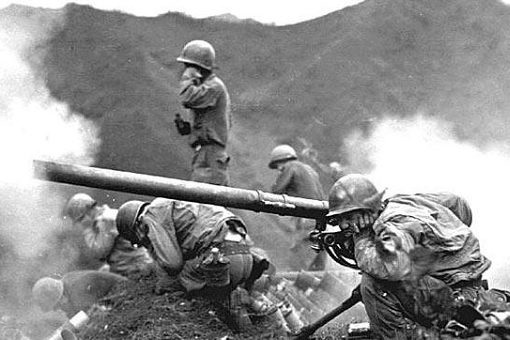
The 1962 India-China war coincided with conflict between Soviet and China due to different interpretations of Marxism-Leninism. As the Sino-Soviet split heated up, Moscow made a major effort to support New Delhi by selling advanced MIG fighter-aircraft to India. Again, India turned to the Soviet Union after the U.S. and Britain refused to sell advanced weaponry to India.
The Russia-India-China triangle relationship is quite interesting. While India and China fight over borders, Russia is a good friend to both countries. China has publicly announced that Russia is its best friend. India, on the other hand, said “every child in India knows that Russia is our best friend”. Neither China nor India wants Russia to side with their respective rival.
The relations get complicated with the entrance of Pakistan to the equation. Both China and Pakistan share a common enemy – India – though Beijing’s reason has more to do with the fact that India and America are allies, who in turn has a common enemy – China. Of course, Moscow saw its alliance with India as essential for offsetting American and Chinese dominance in Asia.
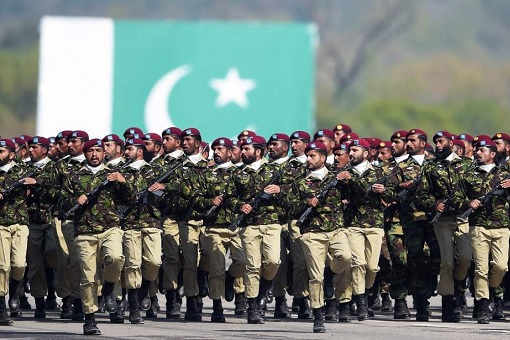
In essence, India has been enjoying reliable support from a major military power like Russia to counter not only China and Pakistan (something that the U.S. cannot offer), but also to protect itself from an untrustworthy friend like America in international politics. But the most important factor is still military – Russia is the primary supplier of weapons to India.
Even till today, Russian-origin weapons are believed to account for 60% to 85% of the hardware of the Indian armed forces. Soviet or Russian has basically supplied everything to India – tanks, guns, fighter jets, missiles and even aircraft carriers. India wants the best weapons, but financial concerns mean a lot of sexy military hardware from the U.S. and Europe are beyond its reach.
BrahMos missile is a success story as a result of a joint venture between India and Russia. It is a medium-range stealthy ramjet supersonic cruise missile that can be launched from submarine, ships, aircraft or land. The name BrahMos itself was formed from the names of two rivers, the Brahmaputra of India and the Moskva of Russia. In January, the Philippines agreed to splash US$375 million for the missiles.
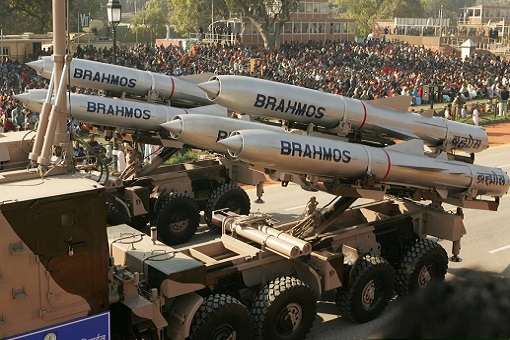
It took Australia decades of obedience and subservience before the U.S. allows it to play with nuclear submarines in 2021. But more than 30 years before the Aussie acquires nuclear submarine, India had already leased its first nuclear-powered attack submarine from Soviet in 1991. New Delhi then signed a US$3 billion deal to lease another Akula-class nuclear-powered attack submarine.
India now plans to buy three more Kilo-class submarines from Russia, in addition to the current arsenal of nine such subs in its navy. It also wants to add 400 more Russian T-90 battle tanks to its existing fleet of 1,100. At present, India also has more than 2,000 Russian T-72 tanks in three variants. Like it or not, it will continue to need Russia to supply spare parts and technical support.
In 2018, India signed an agreement worth US$5.43 billion for five S-400 defense systems with Russia. In November 2021, Russia began the delivery of S-400 missiles – vital to deter against Pakistan and China. Despite years of threats and warnings of sanctions for purchasing the S-400 Triumf missile defence system, the U.S. has yet to decide whether to impose any sanctions.
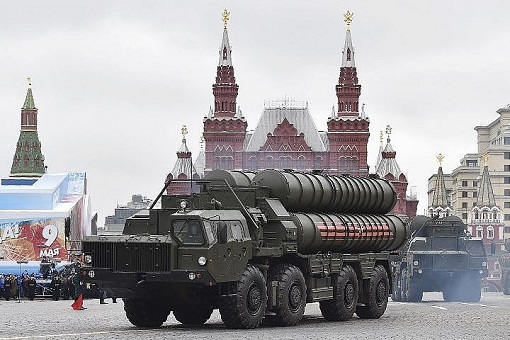
The U.S. and Europe certainly look like a hypocrite for criticizing China, but close both eyes on India. New Delhi knew it was a very important security partner of the U.S., so much it can get away with Russian crude oil, S-400 defence systems and refusal to sanction Moscow. To pacify the U.S., New Delhi has increased its purchase of American weapons to the tune of US$20 billion over the past decade.
Another reason why India will not betray Russia has everything to do with history. The anti-Western sentiment is still very strong due to three centuries of British colonial rule. It was because of the West that India lost a piece of their homeland called Pakistan. It was part of British’s policy of divide-and-rule, systematically promoting political divisions between Hindus and Muslims, after the Indian Rebellion in 1857.
Unlike the U.S., the Soviet Union was seen as sympathetic to India’s needs, with no strings attached, either in the form of weapons technology transfers or political and diplomatic aid. Soviet had even risked war with the U.S. by sending its navy to the Indian Ocean to drive back a warship that President Nixon had sent to intimidate India during its 1971 war with Pakistan.
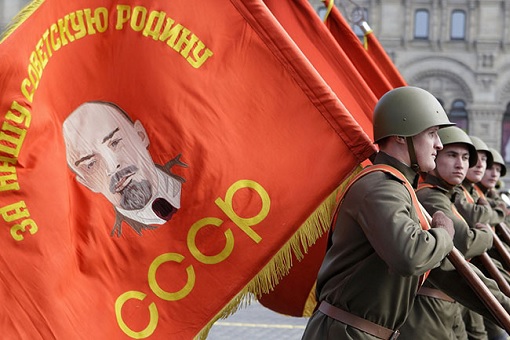
Ironically, it is Ukraine which is daily exposing the truth about Russia's overhyped paper-weapons.
ReplyDeleteHundreds of Russian tanks and hundreds of Russian APCs ripped open like Milo tins by NATO supplied ATGW, their occupants given an instant total cremation.
The Russian Air Force mainly operating from high altitude , firing missiles from inside Russia, fearing to venture below 4,000 meter, where they become vulnerable to Stingers.
You can hit fixed targets from high altitude , but ineffective against mobile or small targets.
The Heavily armed Russian cruiser Moskva , protected on-board by the S-300 , reportedly the Second Best Air Defence System in the World after the S-400, which is The Best of the Best of the Best of the Best air defence missile system money can buy, sunk by Ukrainian prototype anti-ship missiles.
There is an unholy alliance of the Russian Military-Industrial complex, Russia admirers ( many are Lefty extremists who adored the Soviet Union) , and Wankee Pentagon analysts who consistently severely overexaggerate the performance and capabilities of Russian, and before this, Soviet Russia weapons.
Wankee Pentagon analysts , of course ,have their agenda to overexaggerate Russian capabilities in order to promote US military budgets, either to develop equivalent capabilities or to defences against the Russian systems.
Wakakakakaka…
ReplyDelete"Russia's overhyped paper-weapons"
!!??
Based on distorted FARTS of
"Hundreds of Russian tanks and hundreds of Russian APCs ripped open like Milo tins by NATO supplied ATGW, their occupants given an instant total cremation"!
Russian tanks and hundreds of Russian APCs?
Mfer, can u actually tell the difference of which belonged to which country when both r using the SAME kind of designs?
Ukraine is having a flat topographical landscape. Thus aerial assaults, by planes or missiles, r the most effectively military attacking module - ANY new military recruit would have been taught as 101 lesson.
BTW, how many Stingers have the Ukraine nationalists received? How many been resold in black market? How many been destroyed while in transition from NATO to Ukraine?
Bet, no news in yr fart filled well would ever told u that!
The sinking of the Russian flagship Moskva was the work of the US military Intel, HW & Starlink satellite system.
Ukrainian prototype anti-ship missiles??!!
Wakakakaka… go check the dressupped performance sheets of that Ukrainian prototype anti-ship missiles before u fart.
The Starlink isn't just a satellite communication link, it's a backup 2ndary support for the militarized GPS used by the US military. That system is been used in Ukraine - (1) for in situ testing & verification. (2) masqueraded role of communication satellite hides its geo-positioning function. (3) to mislead the Russian. It did & yet exposed its implicit military function prematurely. Thus, losing the original hiding aim of 2ndary military support.
Henceforth, the Russian/Chinese would be keeping an active watch on the Starlink system. It would be the first knockout targets once those satellites pass through their warzone.
Mmm… perhaps, u have missed out the fact that since the sinking of the Moskva, all the US Truman Carrier Strike Group with more than 20 ships, including at least 12 guided-missile destroyers and cruisers, deployed to the Mediterranean Sea have been in high alerts & keep far far away from the Black Sea!
Wakakakakaka… the Yankee crews r petrified by any retaliation from the Russko bear. With the hypersonic cruised missiles, NO Yankee navy ship can be spared SHOULD Putin decided to hit back!
Mfer, keeps to yr adored Yankee super weaponry. Don't forget to remind yrself that US has NO equivalent version of the Sarmat hypersonic ICBM, in wet dream &/or reality.
The Western politicians and its complicit media-in-crime refused to see the actual situation on the ground, or rather, they pretend not to know.
ReplyDeleteExcerpts :
"The first phase of Russia’s special military operation consisted of the following:
*Moved troops and armored columns into Ukraine from three directions–North, East and South.
*Deployed only 200,000 troops while maintaining key reserves inside Russia along the Ukrainian border against a Ukrainian Army estimated to number 600,000.
*Avoided attacking communication systems leaving cell phone and internet largely intact.
*Took control of the largest nuclear power plant in Europe–Zaporizhzhya Nuclear Power Plant–but kept the electricity flowing.
*Supported offensives by the Luhansk and Donetsk People’s Republics against Ukrainian forces in the East.
*Gradually surrounded Kiev from the North but did not fight any key battles to occupy outlying cities.
*Destroyed Ukrainian ground radar, key airfields and military bases in Western Ukraine with precision missiles.
*Sealed the southern coast of Ukraine with the Russian Navy.
*Launched an assault on Mariupol, a key Ukrainian port in the South, and systematically annihilated the neo-Nazi AZOV battalion (Russia now controls all of Mariupol except for the steel plant and continues to methodically eliminate the remaining defenders).
The immediate effect of this operation divided and froze the Ukrainian Army in four geographical regions-North, South, East and West. During the first two weeks the Ukrainians and NATO did not know where Russia’s major blow would fall. Russia’s initial success in eliminating Ukraine’s Air Force as a combat effective unit and the destruction of key military bases and fuel depots made it impossible for Ukraine to dispatch reinforcements to Donbas and Mariupol.
During the past week Russia has effected a tactical redeployment of forces that originally surrounded Kiev. It is reported that those units moved west and are likely to be used as block force that will be part of a broader effort to defeat the bulk of the Ukraine Army now virtually surrounded in the eastern part of the Donbas.
With its limited ability to move troops or resupply frontline forces, Ukraine is relying on propaganda and information warfare to try to weaken Russia and entice NATO to join the fray. Here is a good summary of these efforts courtesy of Nighvision:
*For instance when the Russian POW torture video came out, it was Ukraine that cried “fake” until days later all western ‘authorities’ were forced to admit it was real.
*When the ‘maternity hospital’ falseflag in Mariupol occurred, Kiev supporters blamed Russia and once again Russia was the one proven right and vindicated when the pregnant girl at the center of it herself released an interview completely refuting Ukrainnian lies, and stating that not only did Ukrainian soldiers turn the hospital into a barracks but stole the precious food from pregnant women and then shelled the hospital themselves.
*When Ukrainie claimed Russia bombed an ‘innocent’ civilian mall, yet the very next moment the Russian MOD released detailed videos showing precisely how Ukrop forces positioned mobile artillery in the parking garage of the said ‘mall’.
*When Ukrops claimed Russia tried to blow up the Zaporizhzhia plant, yet security footage showed that as a Russian security force arrived, it was fired upon by an RPG from Ukrop positions in one of the administrative buildings of the plant.
*When the famed American journalist was killed in Irpin right outside Kiev a month ago, and all Ukrainian supporters shouted Russia, but the entire incident was quickly swept under the rug when the journalist’s own friend/companion in an interview stated they were fired upon by Ukrop troops at a Ukrop checkpoint miles away from the nearest Russian forces.
Early in the war many in the West were scammed by the story of a remarkable Ukrainian allegedly downing seven Russian combat planes. It too was a lie."
"Watch as this fiery Indian host launches a full scale TRUTH carpet bombing on his American guests. They tried to lecture India for buying Russian oil and what they got in return was pure gold!"
ReplyDeleteWa ka ka ka, these American panelists have no place to hide their faces!
https://www.youtube.com/watch?v=iFVGUUoFgF8